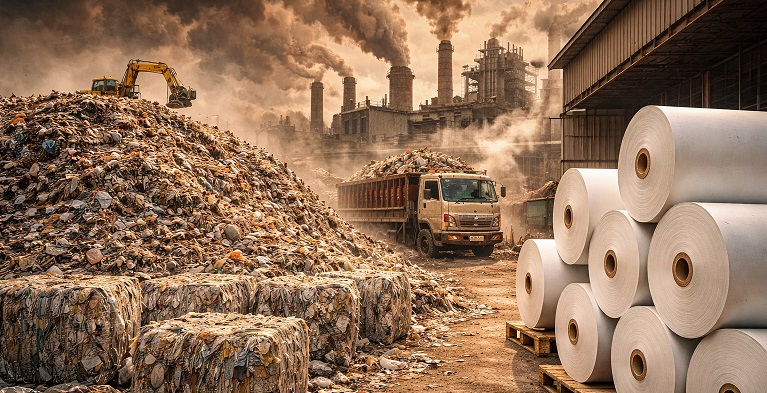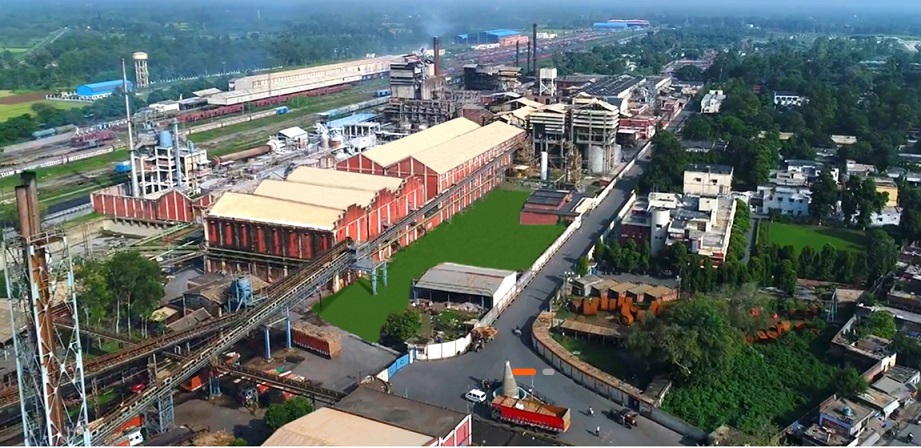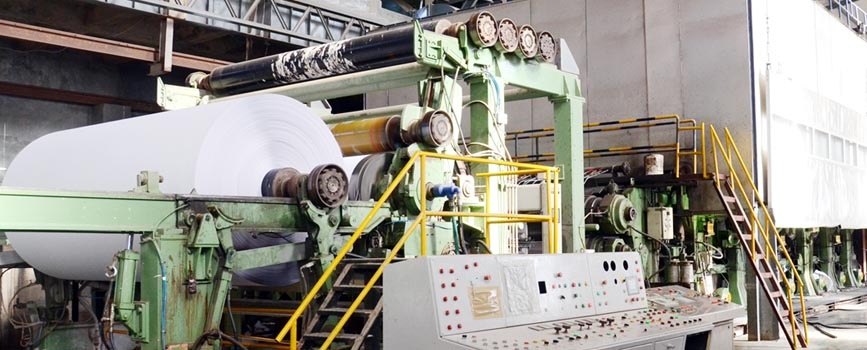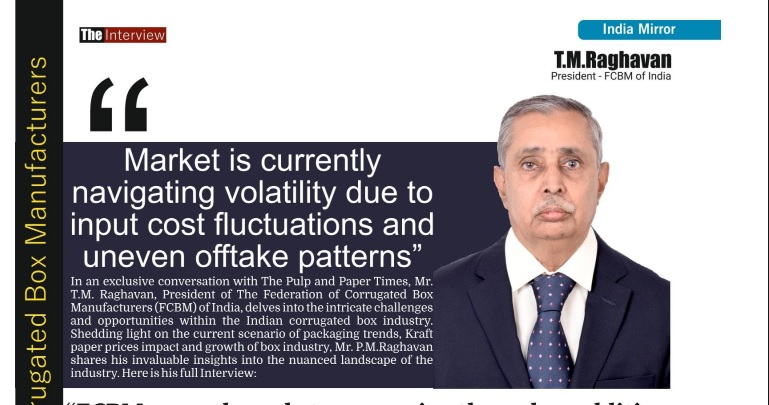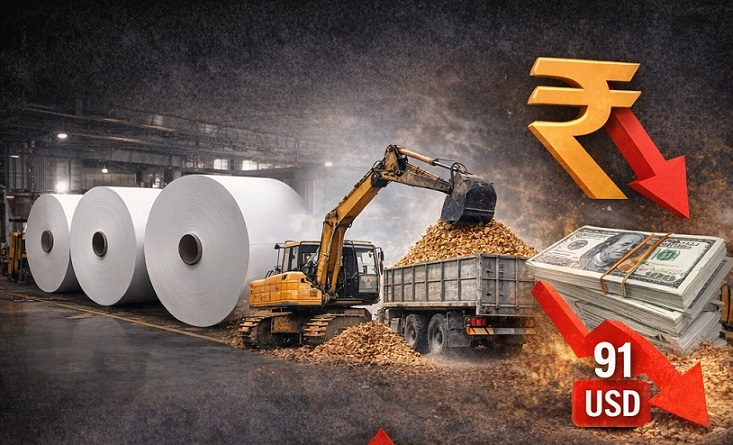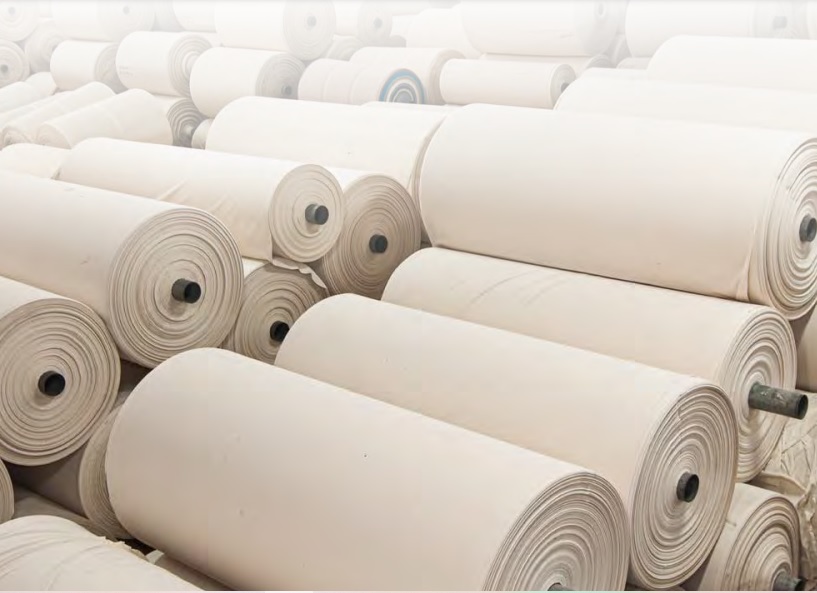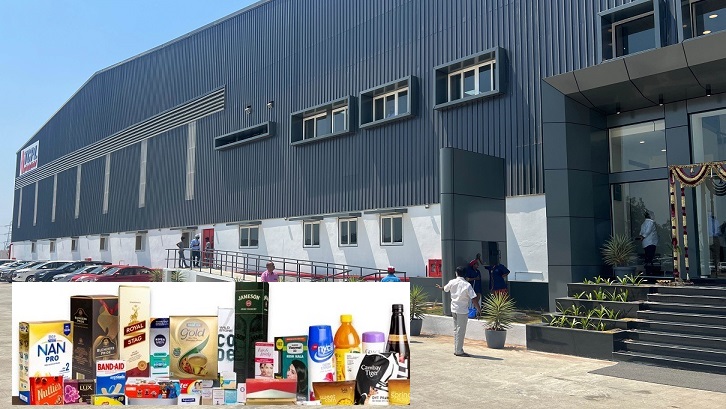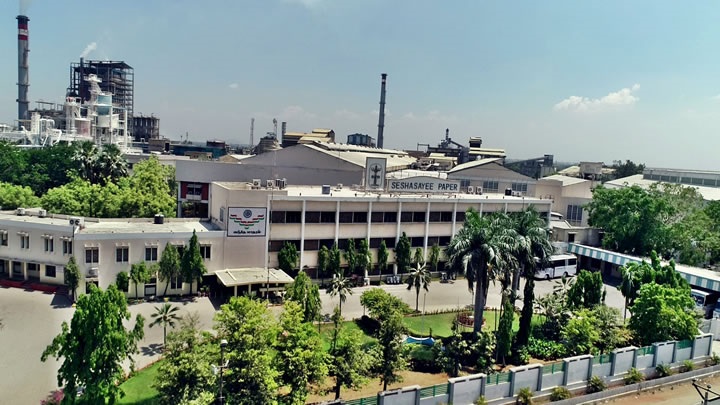IPPTA: The key growth drivers for Indian Paper Mills include technology, best environmental practices, and reacting to market changes
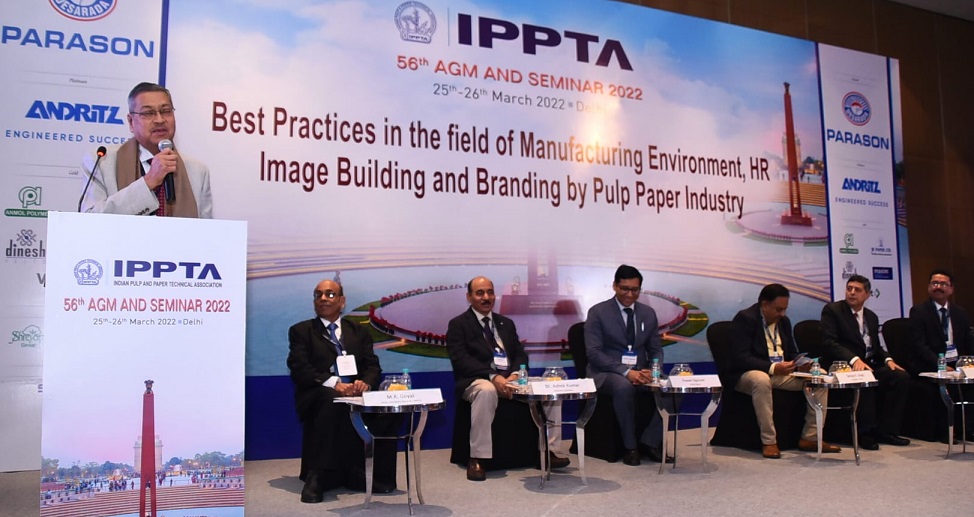
IPPTA: The key growth drivers for Indian Paper Mills include technology, best environmental practices, and reacting to market changes
New Delhi | 26th March 2022 | The Pulp and Paper Times:
Indian pulp and paper mills have been flourishing over the past decades, and are currently producing around 25-million tonnes of assorted grades of paper per annum. Indian paper mills thrive on a varied technology canvas. Many mills are still manufacturing paper on machines which are not synchronised with current requirements. Relatively modern machines used by major paper manufacturers contain latest features with the support of advanced technology, setting them at par with the best.
In the midst of mounting competition, it is essential that scale of operation and economics are revisited periodically to improve working parameters and achieving new benchmarks. It is, therefore, even more imperative to bring on a common sharing platform all such manufacturing practices which help in enhancing efficiency of operations and to be in the competition.
This time, on the occasion of its 56th AGM, Indian Pulp & Paper Technical Association (IPPTA) has organized a seminar on best practices in the field of manufacturing, environment, HR, image building and branding by the pulp and paper industry.
Dr. Ashok Kumar, Executive Director of Pudumjee Paper Products, gave a keynote speech to the leaders of the paper industry. He shared his extensive experience and the state of the paper industry today, saying that three days ago, we had to execute an order and our customer requested a price for the upcoming quarter. I responded, "Yes, we will do that," and we had to execute the order. Pudumjee Paper Products bought pulp and waste paper that was imported. What we can quote today is a $120 per MT increase in raw material prices two days later. especially those mills that depend on commercially obtained raw materials. presently apparent. The changes that used to occur every ten years or so have happened in the past 12 months. How can you adapt or modify yourself in a year for a challenging ten years with our kind of infrastructure? Since there is instability, unpredictability, and market volatility, my food for thought may have been slightly pessimistic.
Attending the seminar as a chief guest, Mr. Pawan Agarwal, Managing Director of Naini Group, has emphasised more on investment in latest technology and adopt best environmental practices to minimize the future crisis like COVID. Mr. Agarwal said that, In Covid pandemic, writing printing paper mill were worst affected, and we were also the worst affected for one month only, and after that one month we started producing two products one was cup stock on PM-1 and other is absorbent kraft. We were able to match the quality of absorbent karft with paper being produce from wood.
Mr. Agarwal further share his experience with audience, he says “We invested around INR 75 crores in 2014 on PM1 for technological up gradation, and we were given seven years for payback time, with this key investment we were happy to improve the quality of the paper and able to produce more paper. Friends believe me, Technology never lets you down and so was the case with us we got the payback in less than two years”
Addressing the problem of Agro waste paper mills, Mr. Agarwal explained Naini’s way of working in context of dealing with not at par quality of agro residue paper. “The problem for the Agro waste paper mill in those times was the quality of paper which was not really as good as wood base paper on certain aspects. Our brightness was okay, the cleanliness of the sheet was okay but the printing results was not good. The customer was not happy with the bulk of the paper. So then we put our minds together, and in 2009 we started searching for a technology which could take care all these issues. In 2011, we installed a shoe press and a metering size press. That was the turnaround time for our mill, we started producing good quality of paper, unacceptable quality of paper and that is when we realized that we can really complete with the paper being manufactured from wood for a certain level. Again the problem of opacity was still there you know agriculture residue has its limitation, that fibre has its own weaknesses. So in terms of strength you can take care by adding softwood pulp”.
On the myth that Paper Industry cuts Tree, Dr. Ashok Kumar puts more emphasis on collective effort by industry to remove the above myth, “There are lots of myths about the paper industry and the problem is we have never addressed them it. In last 6 -7 years we start doing something – like Paper Day, WhatsApp messages, good work has been done, to my mind it is more internal, we are doing it we are sending messages but we are not getting desire impact” he said.
He said that whether it is IPMA, IPPTA, FPTA and IARPMA, we have to get together, we have to create the financial resources. Its not going to happen like this. It will not happen just by sending messages or by doing things. So internally we all know, it’s a part of image building today, we have to create that image, and that image has to be created among people who perceived us. As an industry, which destroys this and that, which is not true at all, maybe we have to start with children in schools, because that will be great part of image building. We all collectively must ensure the next one or two years we spend in our image building. We conduct some kind of image building seminar, where along with technical things; we call those people who matter, make people aware because finally it is your image which matter.
On the strict environmental norms, Mr. Agarwal bewares Industry, he suggested to paper mills that if they wants to grow in a sustainable manner at least for next 15-20 years has to truly take care of its effluent being discharged from its mill. There is no substitute to it or alternate to it.
He said, “Any mill who is extracting water from ground, beware of your impending threat. You are not going to be allowed to do so in five or ten years down the line, Start preparing for your recycling activities searching for the Technologies where you can recycle more and more of your effluent.
IPPTA conferred the ‘Life Time Achievement Award’ to Mr. Brij Mohan Khanna- founder of Khanna Paper Mills, for his immense contribution to Paper Industry. Under his leadership from a small paper mill in Amritsar, Khanna Paper Mills became one of the biggest ones in India. A decade and half later, his sons, Saurabh Khanna and Rahul Khanna carried forward the mission to make recycling a significant part of Indian culture.
Mr. Brij Mohan Khanna shares his vision with the paper industry fellows, he said, “We are still far behind from the Western world in terms of innovation despite of very good talent pool available in India. If we want to make India next manufacturing hub for paper, we need to invest our resources on innovation and value addition rather than blindly following the west. The innovation happens in world has always been keeping their need and priority, and we have a huge consumption at India, therefore we can focus and invest whatever market required. I strongly believe that industry must start investing good amount of resources on Innovation and Technology. When I talk of innovation & Technology it gives me immense pleasure to inform you that we have started a plant just a month back. A pyrolysis plant of waste plastic, which has been erected and commissioned ten days back.”
On the topic of Emerging challenges and opportunities for Paper Industry, Federation of Paper Traders Association (FPTA)’s president Mr. Deepak Mittal says, the world is looking at China + 1 strategy and India remains to be the natural beneficiary of this scenario due to its demographics, low cost and a strong domestic market. China is 6 – 7 times India’s size even a small shift can double India’s base (120 Mn. Tons – 20 Mn. Tons). With China clamping down on polluting industries, there is going to be a shift of paper manufacturing from China to other developing countries like India, Vietnam, and Indonesia etc. It is up to us how we en-cash this opportunity.
Mr. Mittal further says, “With recovery insight, the outlook for the medium to long term looks very promising for the Indian Paper Industry. The rules of the game are changing - Paper Industry will no longer be in the traditional 3 – 5 years cycles. The cycles will become shorter and may be one up and one down cycle in the same year. This could well be the new normal for the Paper Industry. The industry and trade will have to learn to live with it”
The inaugural session was also addressed by IPPTA’s president- Mr. Sanjay Singh, and vice president Mr. Ganesh Bhadti. Mr. Bhadti has taken over the charge as the new president of IPPTA during the announcement of executive committee members for the year 2021-2022.
Web Title: IPPTA The key growth drivers for Indian Paper Mills include technology best environmental practices and reacting to market changes




 Join WhatsApp Group
Join WhatsApp Group Join Telegram Channel
Join Telegram Channel Join YouTube Channel
Join YouTube Channel Join Job Channel (View | Submit Jobs)
Join Job Channel (View | Submit Jobs) Join Buy Sell Channel (Free to Submit)
Join Buy Sell Channel (Free to Submit) Paper News Headlines Channel (Free to read)
Paper News Headlines Channel (Free to read)



